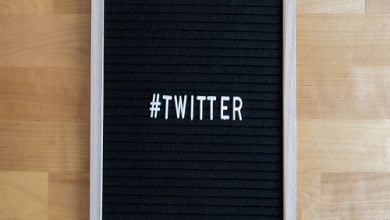
Twitter is a popular social media platform that allows users to post short, concise messages called tweets. While it’s a great way to stay in touch with friends and family, connect with like-minded individuals, and share news and information, there are certain limitations to the platform that users need to be aware of. One of these limitations is rate limiting.
Rate limiting is a term used to describe the practice of limiting the number of requests that can be made to a website or API within a certain time frame. On Twitter, rate limiting is used to prevent abuse, spamming, and other harmful activities on the platform. In this blog post, we’ll take a closer look at what rate limiting is, how it works on Twitter, and what to do if you encounter the message “Rate limit exceeded” while using the platform.
What is rate limiting on Twitter?
In simple terms, rate limiting is a way to control the amount of traffic that goes to a website or API. When a user makes a request to a website or API, that request uses up a certain amount of resources on the server. If too many requests are made in a short period of time, it can overload the server and cause it to crash.
To prevent this from happening, websites and APIs use rate limiting to limit the number of requests that can be made within a certain time frame. This helps ensure that the server can handle the traffic and that all users have equal access to the resources available.
How does Twitter’s rate limiting work?
On Twitter, there are different types of rate limits that users need to be aware of. These include:
- User-based rate limits
- Application-based rate limits
- IP-based rate limits
User-based rate limits are specific to individual users and limit the number of requests that can be made from a single account within a certain time frame. These limits are based on a rolling window, which means that the limit is based on the number of requests made within the last 15 minutes.
Application-based rate limits, on the other hand, limit the number of requests that can be made by an application within a certain time frame. These limits are also based on a rolling window and are specific to the application rather than the individual user.
Finally, IP-based rate limits limit the number of requests that can be made from a single IP address within a certain time frame. These limits are also based on a rolling window and are designed to prevent abuse from a single source.
Twitter’s rate limits are set at different levels depending on the type of request being made. For example, some requests may have a limit of 15 requests per 15-minute window, while others may have a limit of 180 requests per 15-minute window. The specific rate limit for each request is documented in the Twitter API documentation.
What happens when you exceed your Twitter rate limit?
If you exceed your Twitter rate limit, you will receive an error message that says “Rate limit exceeded”. This means that you have exceeded the number of requests that you are allowed to make within the current time frame. The exact error message will depend on the type of request that you are making, but it will generally include information about the specific rate limit that you have exceeded.
When you receive a rate limit error message, Twitter will stop processing requests from your account or application for a certain period of time. The length of time that your account or application will be rate limited depends on the specific rate limit that you have exceeded. For example, if you have exceeded a rate limit of 15 requests per 15-minute window, your account or application will be rate limited for 15 minutes.
If you continue to exceed rate limits after your account or application has been rate limited, Twitter may take further action. This could include temporarily or permanently suspending your account or application. Temporarily suspensions are usually for a few hours or days, while permanent suspensions are permanent and irreversible. Permanent suspensions are typically reserved for serious violations of Twitter’s terms of service or repeated violations of the platform’s rate limits.
How to avoid rate limit violations on Twitter?
To avoid rate limit violations on Twitter, there are a few things that you can do:
- Monitor your usage: It’s important to keep track of how many requests you are making to the Twitter API within a certain time frame. By monitoring your usage, you can avoid exceeding the rate limits and triggering a rate limit error message.
- Use caching: Caching is the process of storing data in a temporary storage area so that it can be retrieved quickly. By using caching, you can reduce the number of requests that you need to make to the Twitter API and avoid exceeding rate limits.
- Use pagination: Pagination is the process of breaking up large sets of data into smaller, more manageable chunks. By using pagination, you can reduce the number of requests that you need to make to the Twitter API and avoid exceeding rate limits.
- Use the right rate limits: Make sure that you are using the appropriate rate limits for the requests that you are making. The Twitter API documentation provides information on the specific rate limits for each request.
- Use Twitter’s API more efficiently: There are many ways to use the Twitter API more efficiently, such as using filters to narrow down your search results or using a more specific endpoint for your requests.
In conclusion, rate limiting is an important concept to understand when using Twitter’s API. By understanding how rate limiting works and how to avoid rate limit violations, you can ensure that your account or application remains in good standing and that you can continue to use Twitter’s API without interruption. Remember to monitor your usage, use caching and pagination, use the appropriate rate limits, and use Twitter’s API more efficiently to avoid exceeding rate limits and triggering a rate limit error message. With these tips in mind, you can enjoy all that Twitter has to offer while staying within the platform’s rules and regulations.








